






The question Barb Pierson, nursery manager at White Flower Farm in Morris, Connecticut, hears most often every year is: “When should I prune my hydrangeas?”
The trouble is, the question implies that one should prune all kinds of hydrangeas—an assumption that Barb has set out to correct.
“People tend to think that if they prune something, they’re going to get more flowers, but this strategy usually backfires,” says Barb. “If you want to make any generalization at all, it’s to be careful.”
As for the answer to the perennial question, there’s no real rule of thumb; the answer depends entirely on the type of hydrangea you have. But, says Barb, “If you don’t know what to do, do nothing.” After you determine the species of your hydrangea, follow our prune-by-species cheat sheet:
Photography by Sara Barrett for Gardenista or courtesy of White Flower Farm.
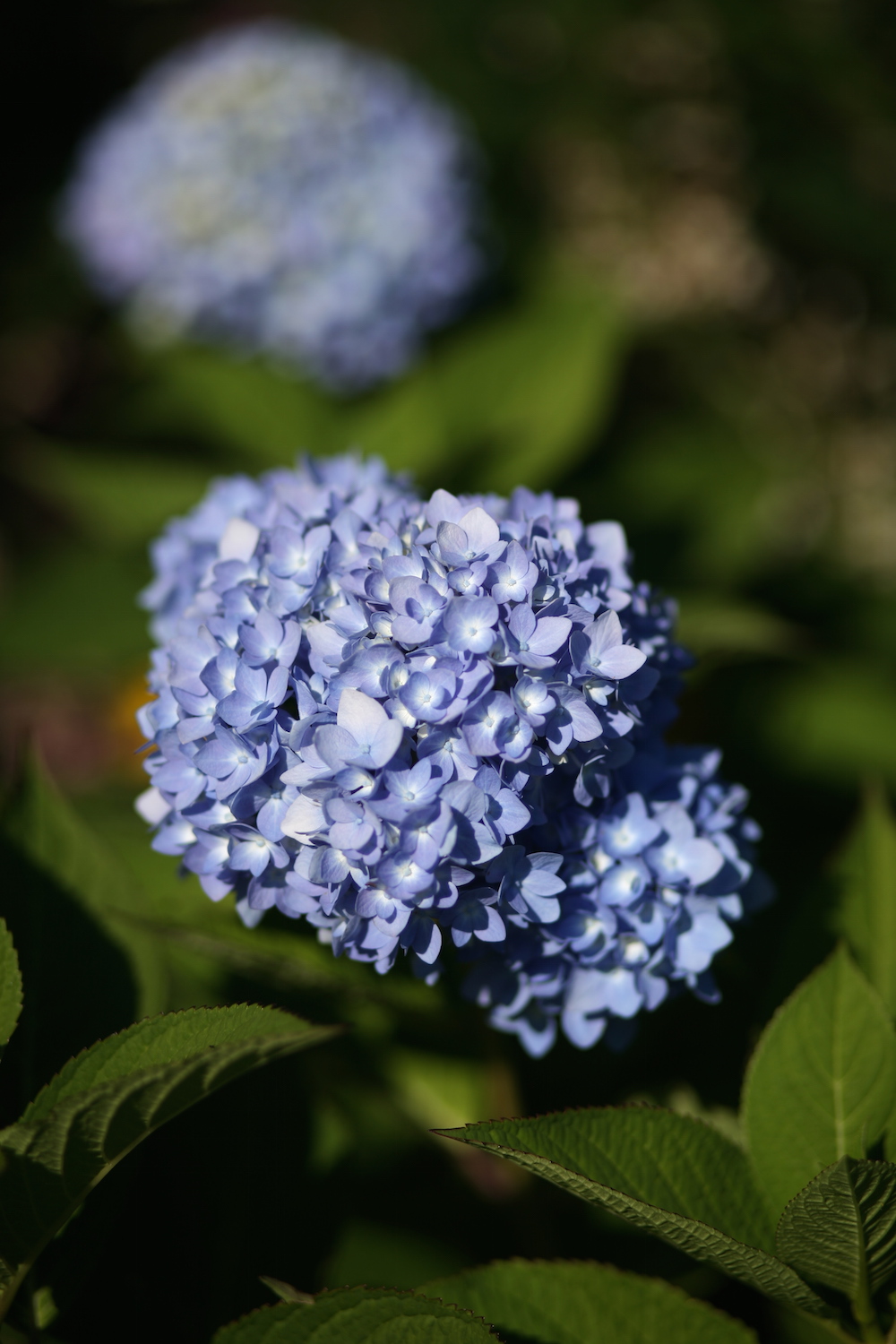
Above: Hydrangea macrophylla ‘Endless Summer’ is $31.95 for a one-gallon pot at White Flower Farm.
Barb calls ‘Endless Summer’ “a breeding breakthrough.” Before its time, all macrophylla hydrangeas flowered only on “old wood,” meaning last year’s growth. So if a bad winter harmed that growth, the plant wouldn’t bloom come summer.
‘Endless Summer’ was the first hydrangea bred to bloom on both “new wood”—this season’s growth—and old wood, producing a summer full of blooms no matter what the previous winter brought. Its reception was remarkable. “This plant really brought hydrangeas to a whole new place,” says Barb.

Above: Hydrangea macrophylla ‘Let’s Dance Diva!’ is $25.95 for a one-gallon pot at White Flower Farm.
If you’re not certain of its provenance, you might be tempted to guess the species of your hydrangea based on its appearance: a “mophead” flower must be a macrophylla, say. But Barb warns against it: “With plant breeders so commonly interbreeding different species,” she says, “you can’t just look at the flower and know which family it’s in.” In this case, a mophead hydrangea such as ‘Let’s Dance Diva!’ is bred to have lacecap flowers.
Pruning Macrophylla
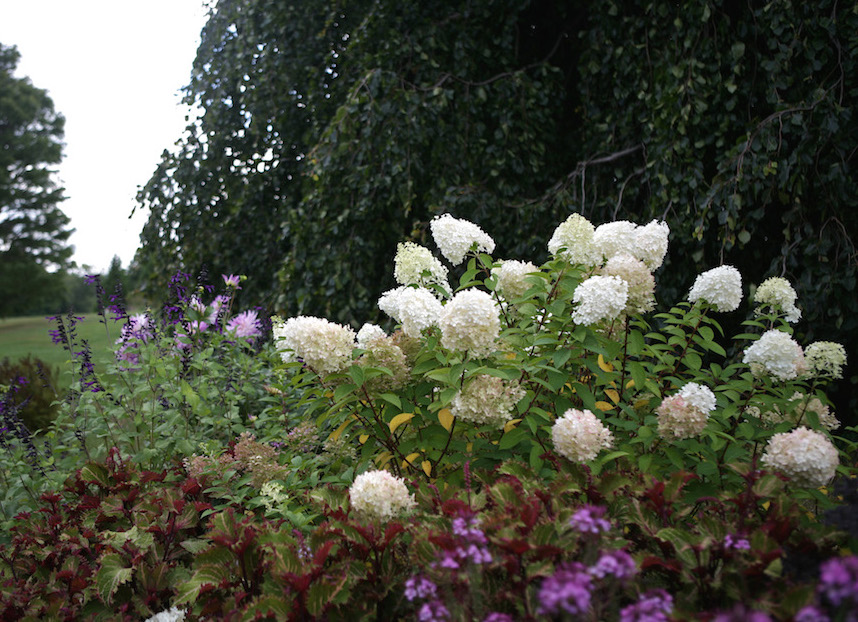
Above: Hydrangea paniculata ‘Bobo’ is $29.95 for a one-gallon pot at White Flower Farm.
This compact variety is ideal for small spaces; it never grows larger than three feet. ‘Bobo’ is Barb’s personal favorite; she planted several by her new house in Connecticut, and values it for its easy care.

Above: Hydrangea paniculata ‘Limelight’ Tree Form is $89 for a four-foot tree from White Flower Farm. The ‘Limelight’ Shrub version is $34.95 for a one-gallon pot.
‘Limelight’ blooms in the heat of late summer, producing pistachio-green, cone-shaped blooms that turn deep pink in fall.
Barb recommends paniculatas for beginners; they’re cold-tolerant and are the most drought-tolerant species of hydrangea. Their color is also not affected by the pH of the soil.
Pruning Paniculata:
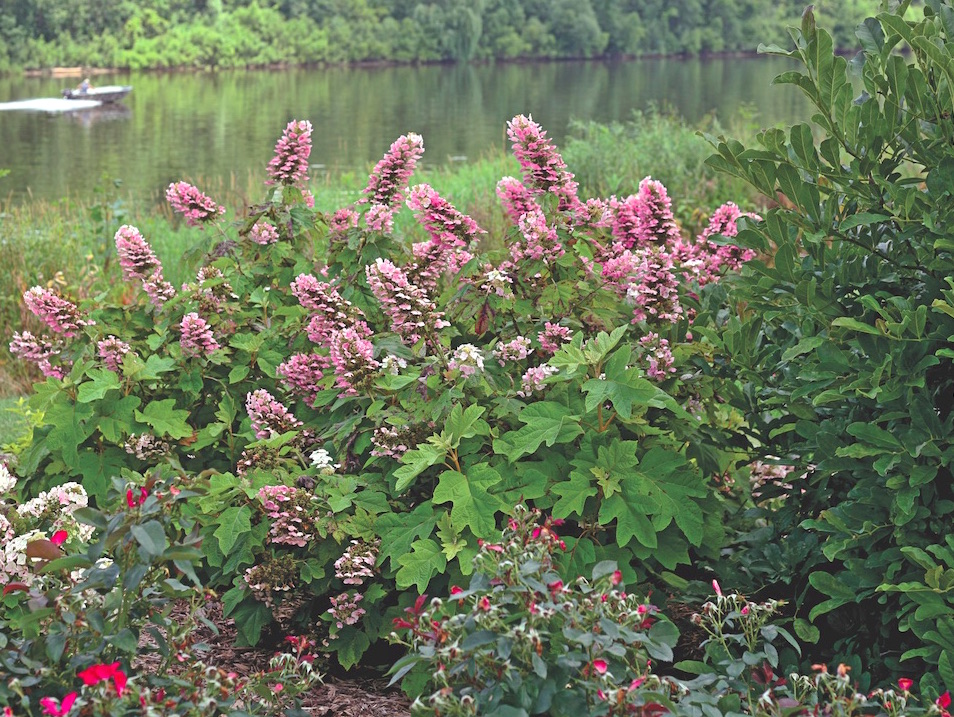
Above: Hydrangea quercifolia ‘Gatsby Pink’ is $26.95 for a one-gallon pot at White Flower Farm.
Barb is quick to point out the three key assets of quercifolia: the name itself means “oak-leaf,” after the plant’s oak-shaped leaves. “That’s really cool in and of itself,” says Barb, but their oak-like leaves turn color in fall so they’re an ideal choice when planning for color in the garden. The last perk? Quercifolia are dead-simple to care for.
Barb is fond of ‘Gatsby Pink’ for its ability to flatter a wide variety of settings. While traveling in Kentucky last summer, she saw Gatsbys aplenty, “looking absolutely gorgeous.”
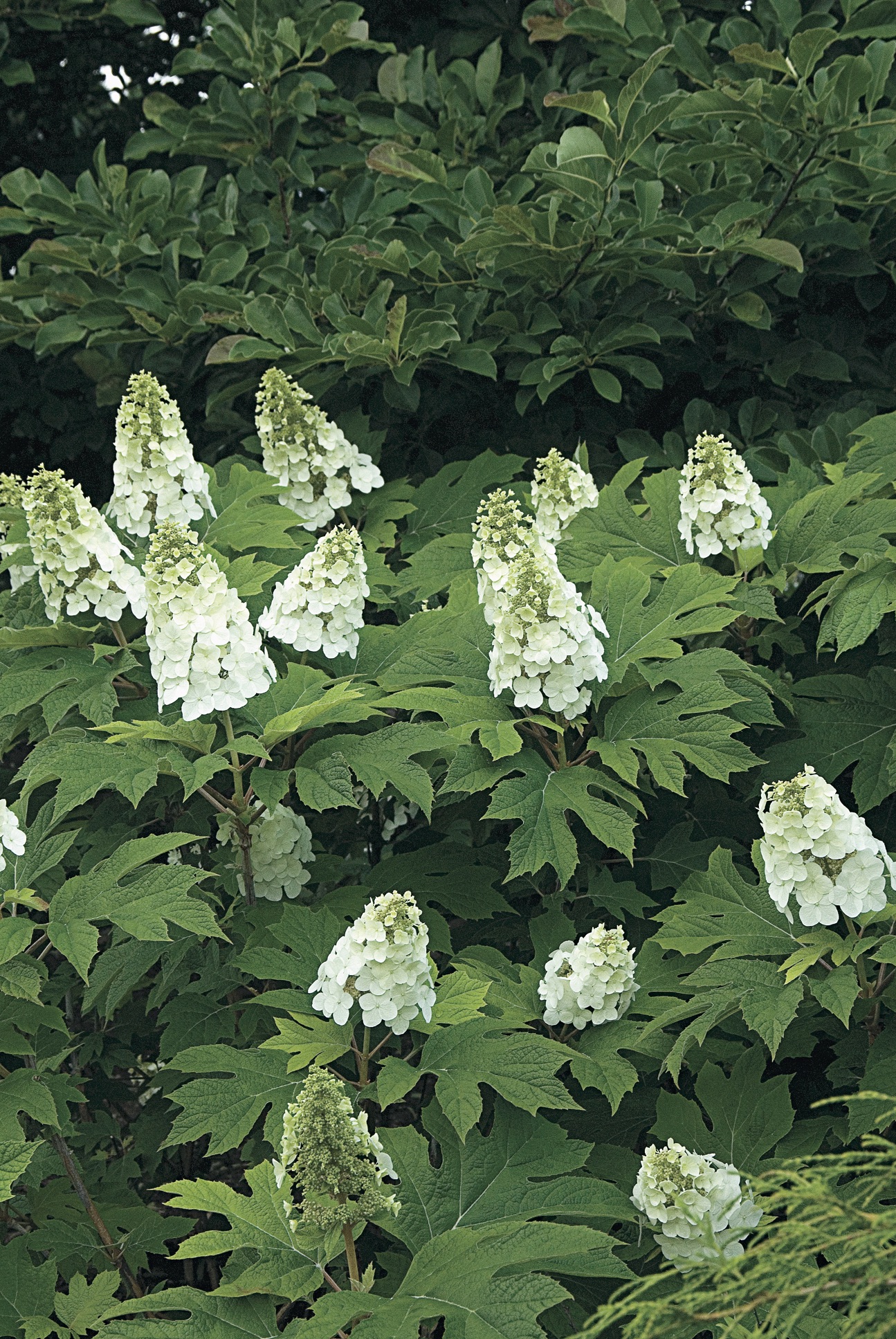
Above: Hydrangea quercifolia ‘Snow Queen’ is $24.95 for a one-gallon pot at White Flower Farm.
Quercifolias are known for their unusual conical shape; that plus their oaky leaves make them the one hydrangea species that is easy to identify. Variety ‘Snow Queen’ has bright white blooms that turn pink in fall, and its green leaves fade to deep maroon. Care is simple, says Barb: “Plant it in partial shade and just do nothing—it will be happy.”
Pruning Quercifolia
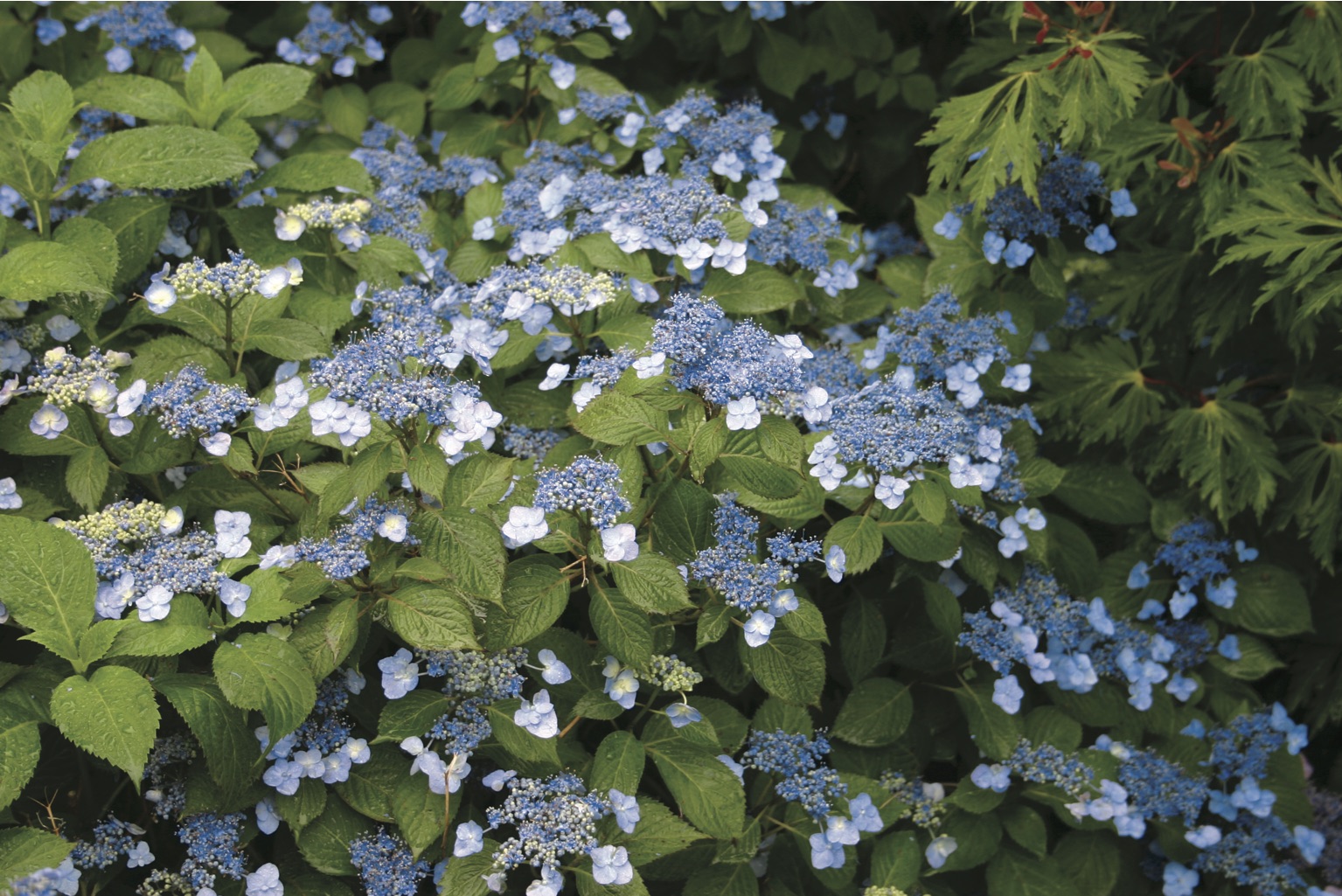
Above: Hydrangea serrata ‘Blue Billow’ is $32.95 for a one-gallon pot at White Flower Farm.
The lacecap hydrangea ‘Blue Billow’ has been one of the bestselling plants at White Flower Farm for more than 20 years, and there’s a reason for its popularity: it tends to be naturally blue in the acidic soils of New England, and “everybody loves that,” says Barb.
Barb’s own ‘Blue Billow’ flowers each year around the Fourth of July. The variety is slow-growing and takes some time to establish, but after that, ‘Blue Billow’ is “one hundred percent easy care; anyone in the country can have this plant,” she says. It’s cold-hardy and will still bloom if planted in shade. (Though all hydrangeas need some sun.)
Pruning Serrata:
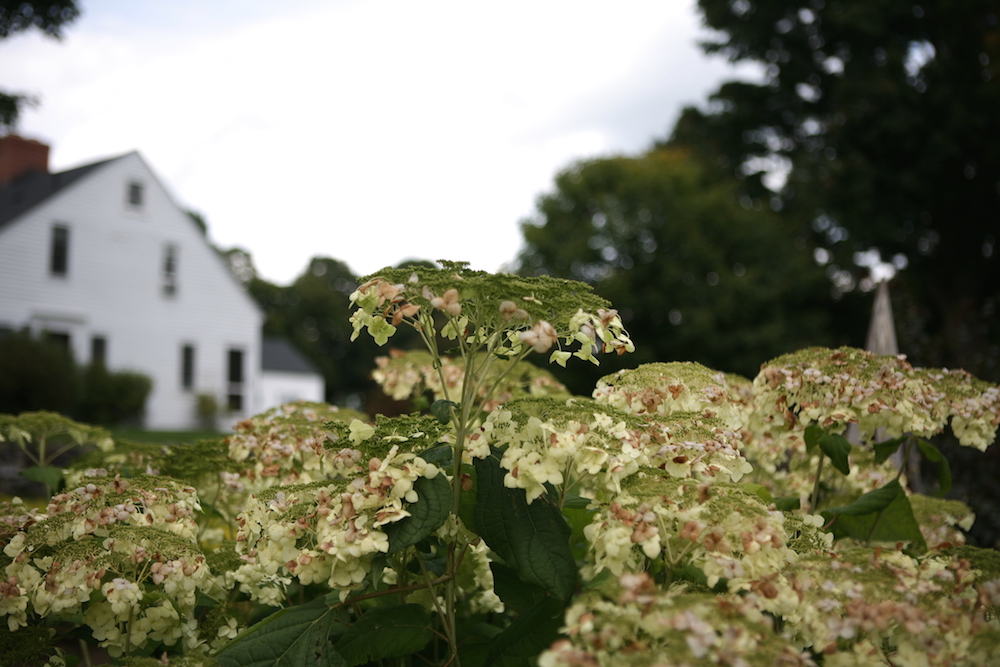
Above: Hydrangea arborescens ‘Haas’ Halo’ is $27 for a one-gallon pot at White Flower Farm.
Barb calls this “a spectacular plant,” first planted on the White Flower grounds four years ago and still collecting admirers. It has 14-inch flowers—Barb proclaims them “gi-gan-tic“—and it’s a pollinator workhorse. “The bees go absolutely crazy on this plant.” The flowers come into bloom somewhat all at once, but they remain in fine form on the plant for a very long time.
Barb notes that ‘Haas’ Halo’ can handle more sun than any other variety listed here, recommending it for Southern gardens. “Keep in mind,” she says, “that a full day of intense Southern sun is too much for any hydrangea.” In the South, a hydrangea must be planted in a half day of shade.
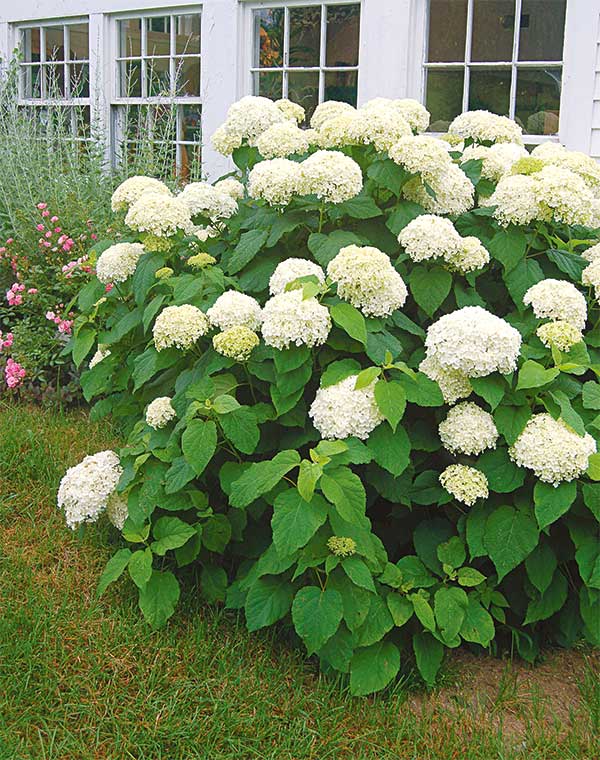
Above: Hydrangea arborescens ‘Annabelle’ is $22.95 for a one-gallon pot at White Flower Farm.
‘Annabelle’ is a classic hydrangea variety that’s “been around forever.” It grows quickly and gets large, and produces dinner-plate sized blooms ranging from brightest white to ivory. The last hydrangea presented here, ‘Annabelle’ is the grand exception to all other pruning rules.
Pruning Arborescens:
The reason to shop at a reputable nursery like White Flower Farm is that “we trial everything—at White Flower and in our own gardens—before we sell it to you,” says Barb. Though the team is constantly on the search for what’s new and exciting, “If it’s beautiful, but it’s a real hassle to grow, we won’t sell it.”
If you’re out of driving range of Morris, Connecticut, White Flower Farm will help you choose the right plants for your garden via phone, email, or online chat. You can even seek advice directly from the nursery’s senior staff horticulturalist.
White Flower Farm ships more than 30 varieties of hydrangea throughout the contiguous US, from now through early fall. (The farm pauses shipments during periods of intense heat; follow along on their website for more details.) And should anything go awry, White Flower Farm offers a money-back guarantee on all plants.
For those within visiting range, White Flower Farm is well worth the drive. It’s open everyday from 9 am to 5:30 pm during the gardening season, at 167 Litchfield Road in Morris, Connecticut.
For more from White Flower Farm, see our post Flower Borders: 10 Essential Tips from White Flower Farm’s Barb Pierson, and visit the farm on Instagram and Facebook.
Copyright © www.100flowers.win Botanic Garden All Rights Reserved